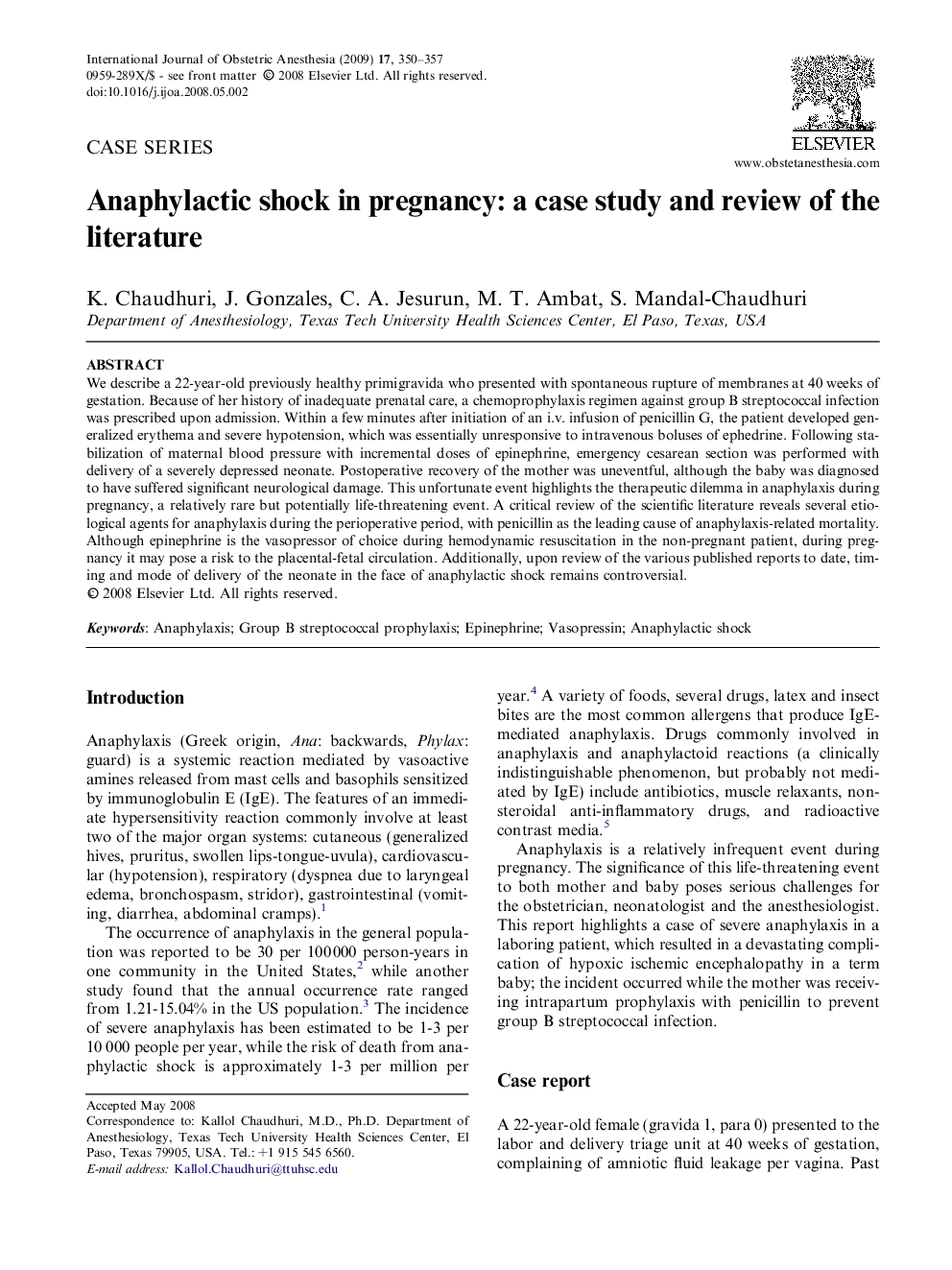| Article ID | Journal | Published Year | Pages | File Type |
|---|---|---|---|---|
| 2758367 | International Journal of Obstetric Anesthesia | 2008 | 8 Pages |
We describe a 22-year-old previously healthy primigravida who presented with spontaneous rupture of membranes at 40 weeks of gestation. Because of her history of inadequate prenatal care, a chemoprophylaxis regimen against group B streptococcal infection was prescribed upon admission. Within a few minutes after initiation of an i.v. infusion of penicillin G, the patient developed generalized erythema and severe hypotension, which was essentially unresponsive to intravenous boluses of ephedrine. Following stabilization of maternal blood pressure with incremental doses of epinephrine, emergency cesarean section was performed with delivery of a severely depressed neonate. Postoperative recovery of the mother was uneventful, although the baby was diagnosed to have suffered significant neurological damage. This unfortunate event highlights the therapeutic dilemma in anaphylaxis during pregnancy, a relatively rare but potentially life-threatening event. A critical review of the scientific literature reveals several etiological agents for anaphylaxis during the perioperative period, with penicillin as the leading cause of anaphylaxis-related mortality. Although epinephrine is the vasopressor of choice during hemodynamic resuscitation in the non-pregnant patient, during pregnancy it may pose a risk to the placental-fetal circulation. Additionally, upon review of the various published reports to date, timing and mode of delivery of the neonate in the face of anaphylactic shock remains controversial.
